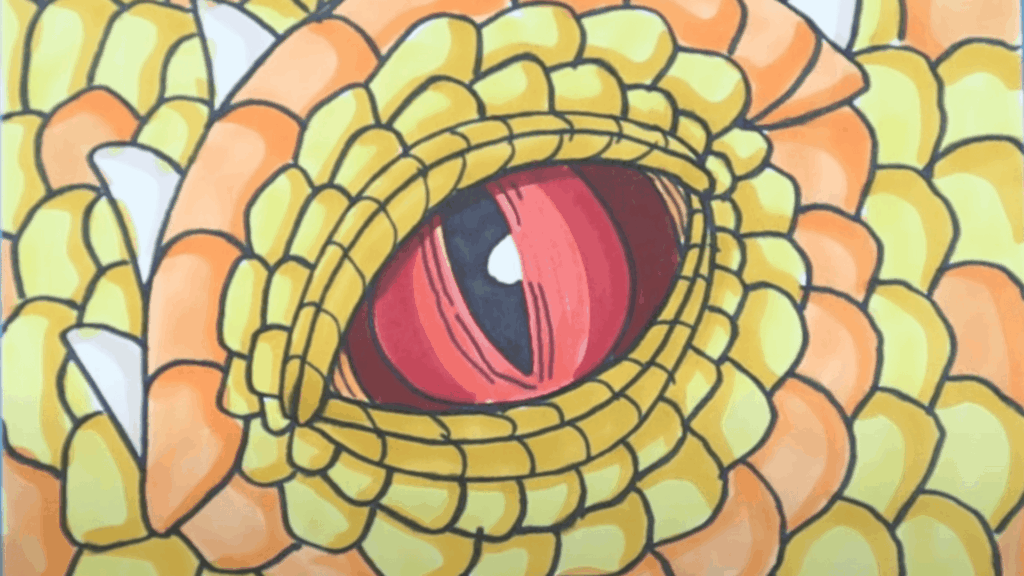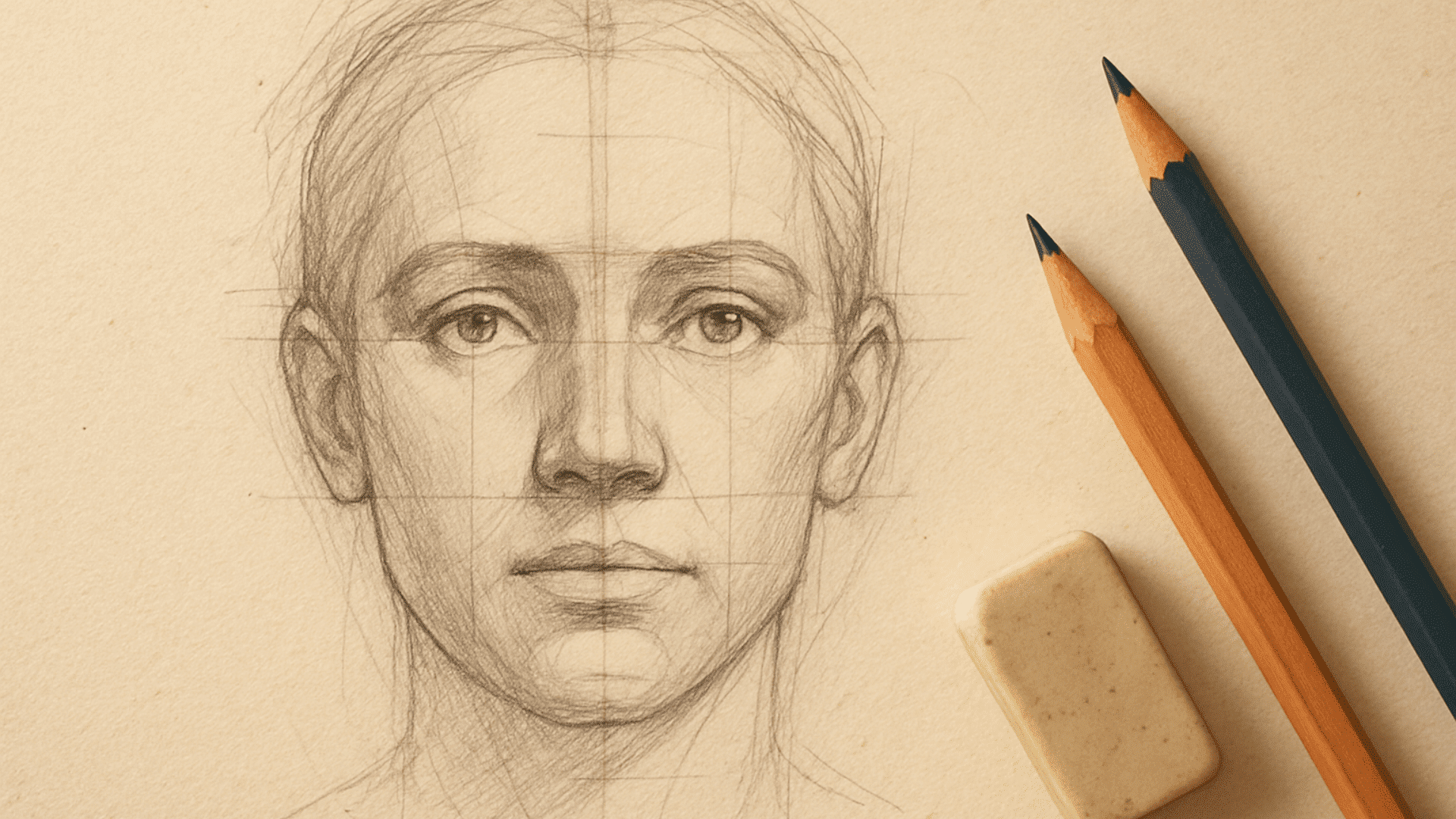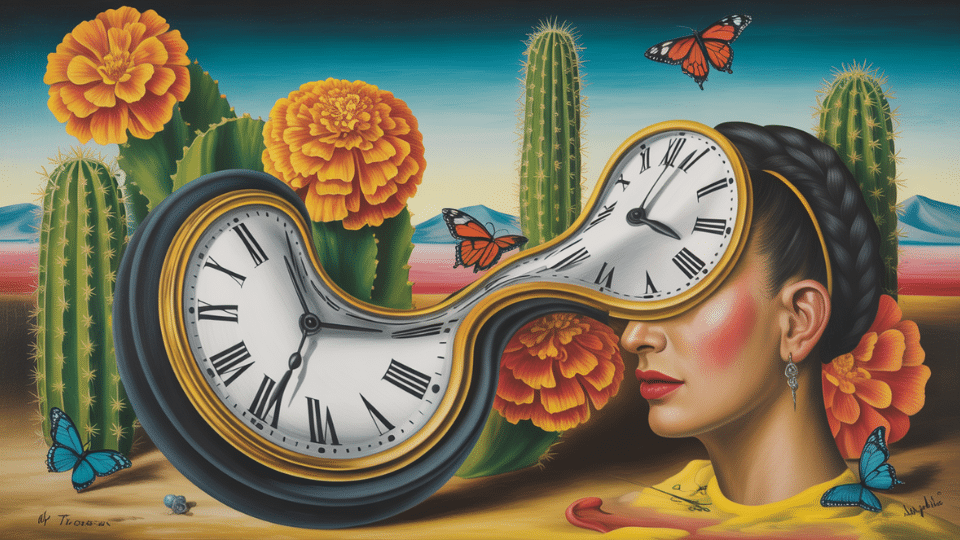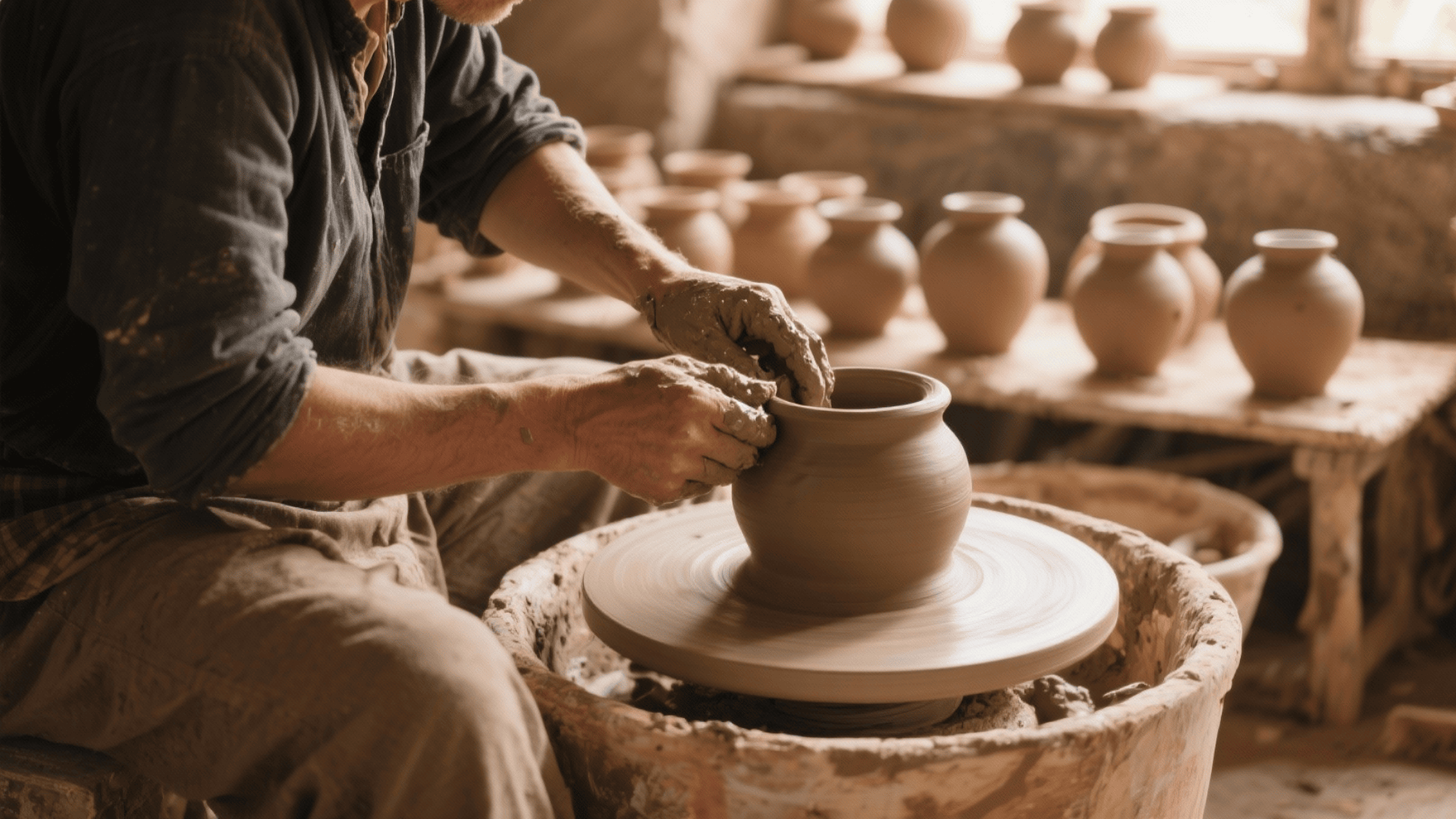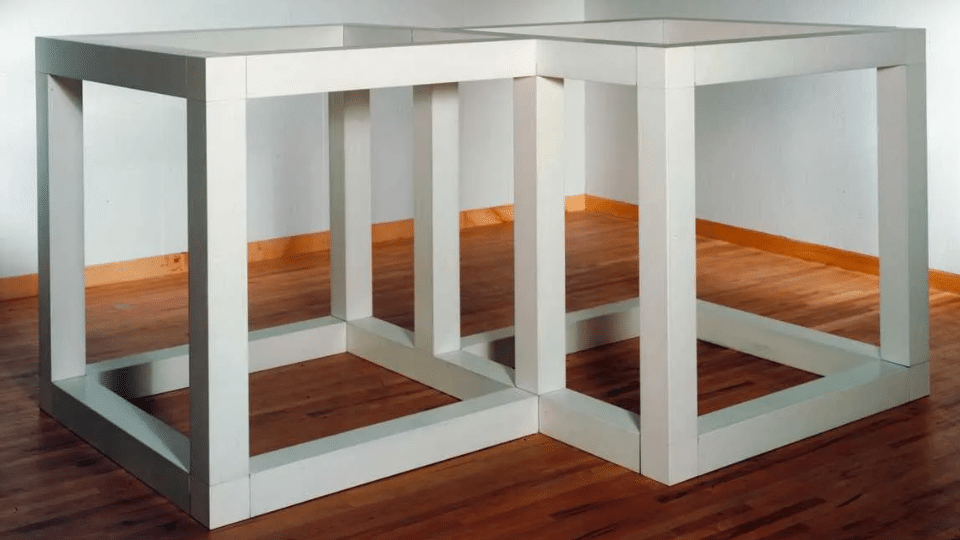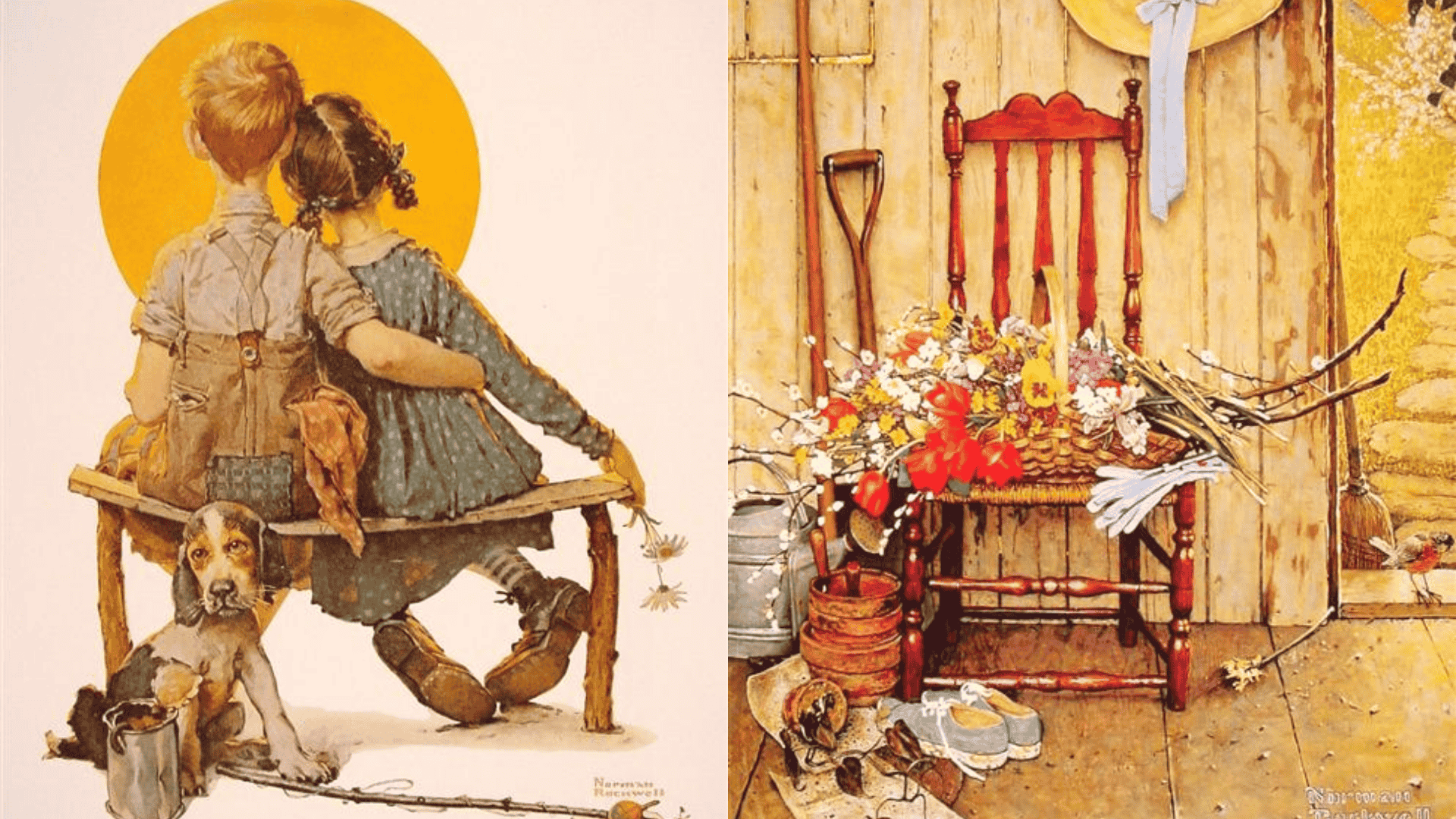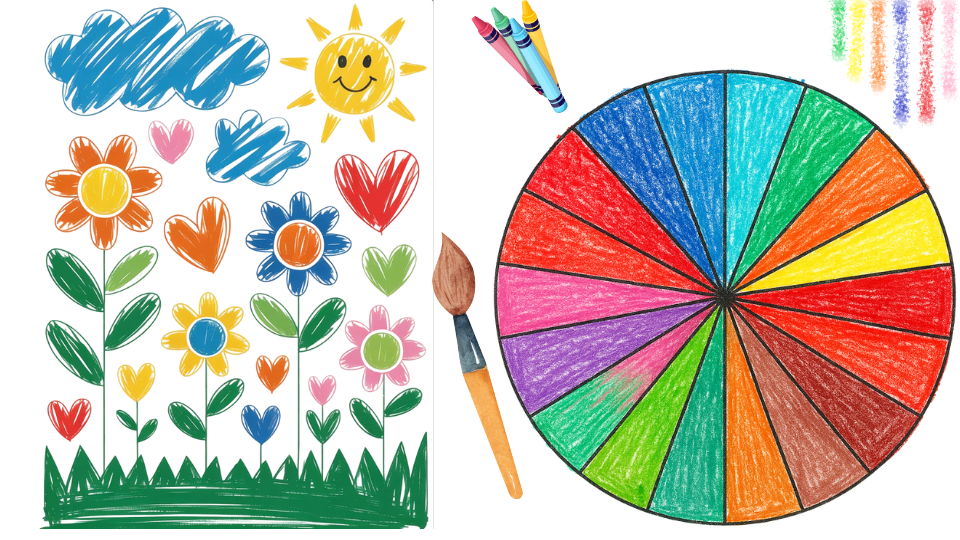Drawing realistic eyes can be incredibly challenging, especially when you want to capture that fierce, mystical look of a dragon. Many artists struggle with getting the proportions right and making eyes look alive rather than flat.
However, here’s the good news: drawing a stunning dragon eye is totally achievable with the right step-by-step approach.
You don’t need years of experience or expensive art supplies to create something that looks professionally done.
This tutorial will walk you through each stage of stylish dragon eye drawing.
Learn to sketch the dragon’s shape, add scales, reflections, and shading for realism; by the end, its powerful eye will stare back from the page.
What Makes the Dragon Eye Art so Intriguing?
Dragon eyes hold a special power that captures our imagination like nothing else. These mystical orbs seem to look right through us, full of ancient wisdom and untold secrets.
When we see dragon eyes in art, movies, or books, we feel a mix of fear and wonder that makes our hearts race.
They represent everything we find thrilling about fantasy – raw power, mysterious magic, and creatures that could either protect us or destroy us.
The emotional pull is undeniable. Dragon eyes can show fierce anger that makes us step back, or deep intelligence that makes us curious. They might sparkle with mischief or burn with protective love.
This range of emotions in a single glance is what makes them so enticing to artists and fantasy lovers alike.
Tools and Materials You’ll Need
| Tool/Material | Purpose |
|---|---|
| Drawing paper | A sturdy sheet to hold detailed lines and shading. |
| Pencil (HB or 2B) | For sketching the outline and adding soft details. |
| Eraser | To refine shapes and clean up mistakes. |
| Black fineliner or pen | To darken outlines and define the pupil. |
| Colored pencils/markers | For building up color layers (yellows, oranges, reds, greens, etc.). |
| White colored pencil/gel pen | To add highlights and make the eye look glossy and realistic. |
| Ruler (optional) | To help balance proportions if desired. |
Step-by-Step Guide on How to Draw a Dragon Eye
Ready to bring your dragon to life? This step-by-step guide will walk you through creating attractive dragon eyes from initial sketch to final magical details.
If you’re a beginner or refining your technique, these simple instructions break the complex process into manageable steps, helping you build confidence and master each element of dragon eye drawing.
Step 1: Outline the Eye
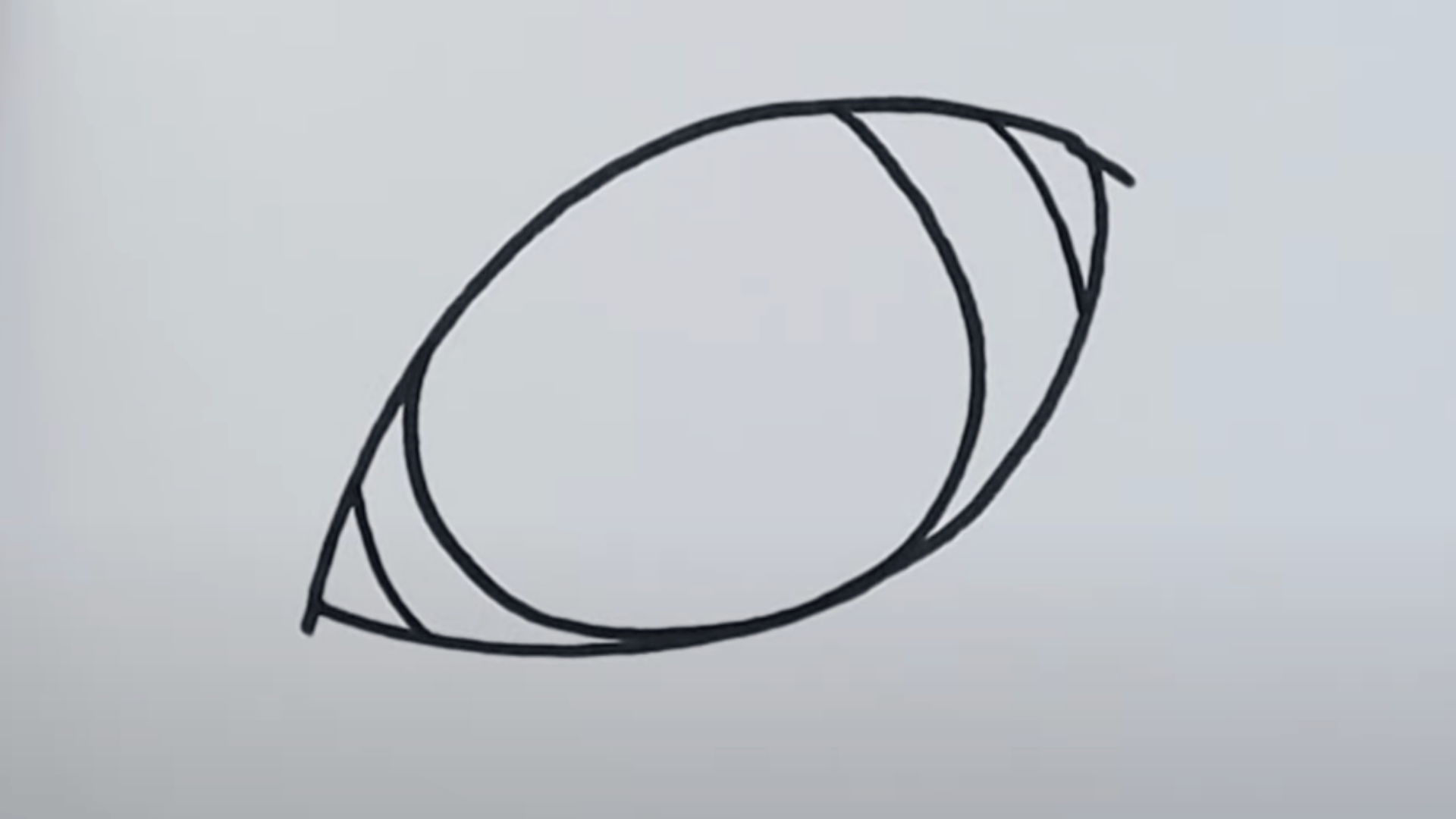
Begin in the center of your paper by sketching a slightly curved line that rises and then dips at an angle. Directly beneath it, draw another line that slopes downward before curving upward again.
This forms the almond shape of the eye.
Inside this shape, sketch a smaller curved line to create the eyeball. You can add a couple of short lines at the corners for extra definition.
Step 2: Draw the Pupil
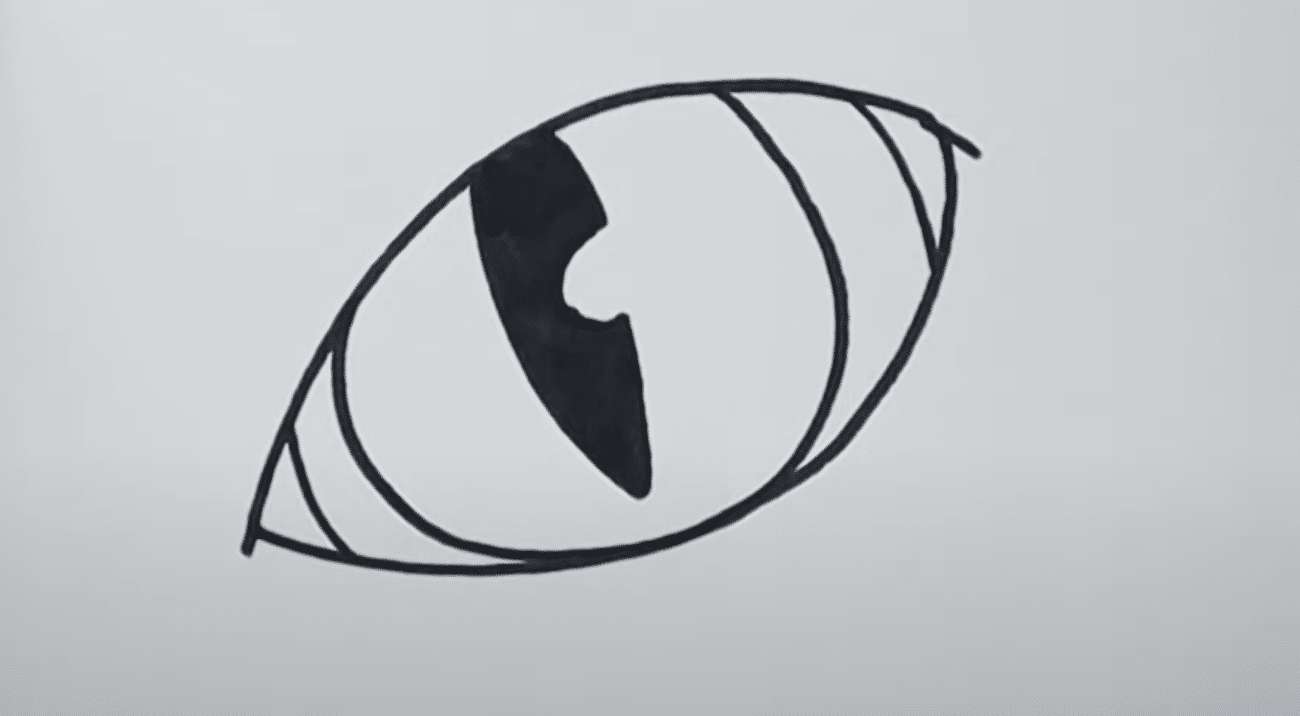
Choose the style of pupil you’d like: round, skinny, or detailed. For a striking look, draw a slim vertical pupil.
Start with a curved line that rises halfway, then close it off with a half-circle at the top. Shade in the pupil, leaving a tiny highlight spot if you’d like to add some sparkle.
Step 3: Add Texture Around the Eye
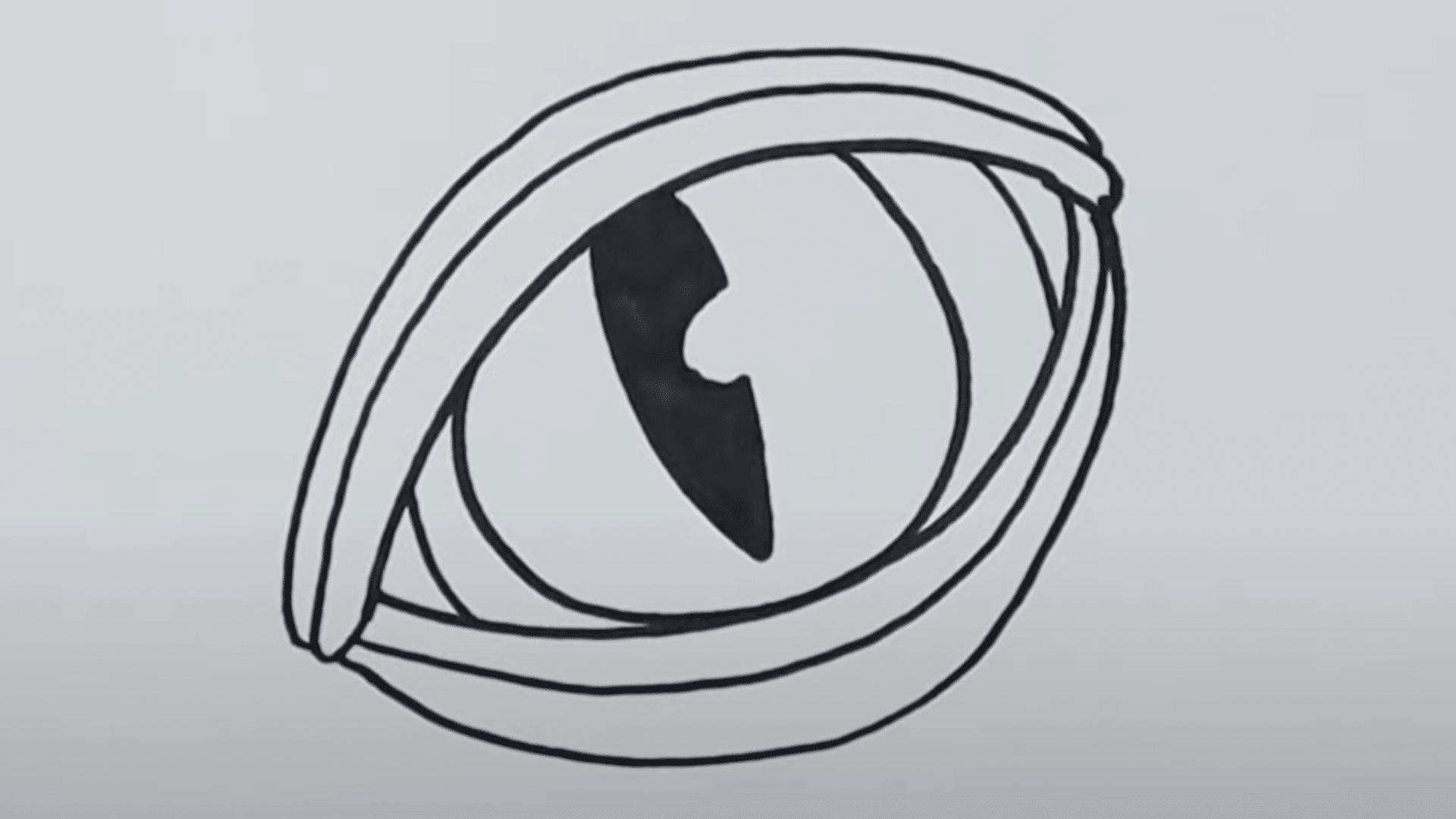
To make the eye feel alive, draw short curved lines around the edges of the eyeball.
Connect them at different angles to suggest folds and depth. Repeat this step a few times, both above and below the eye, so that the area starts to look textured and scaly.
Step 4: Create Scale Patterns
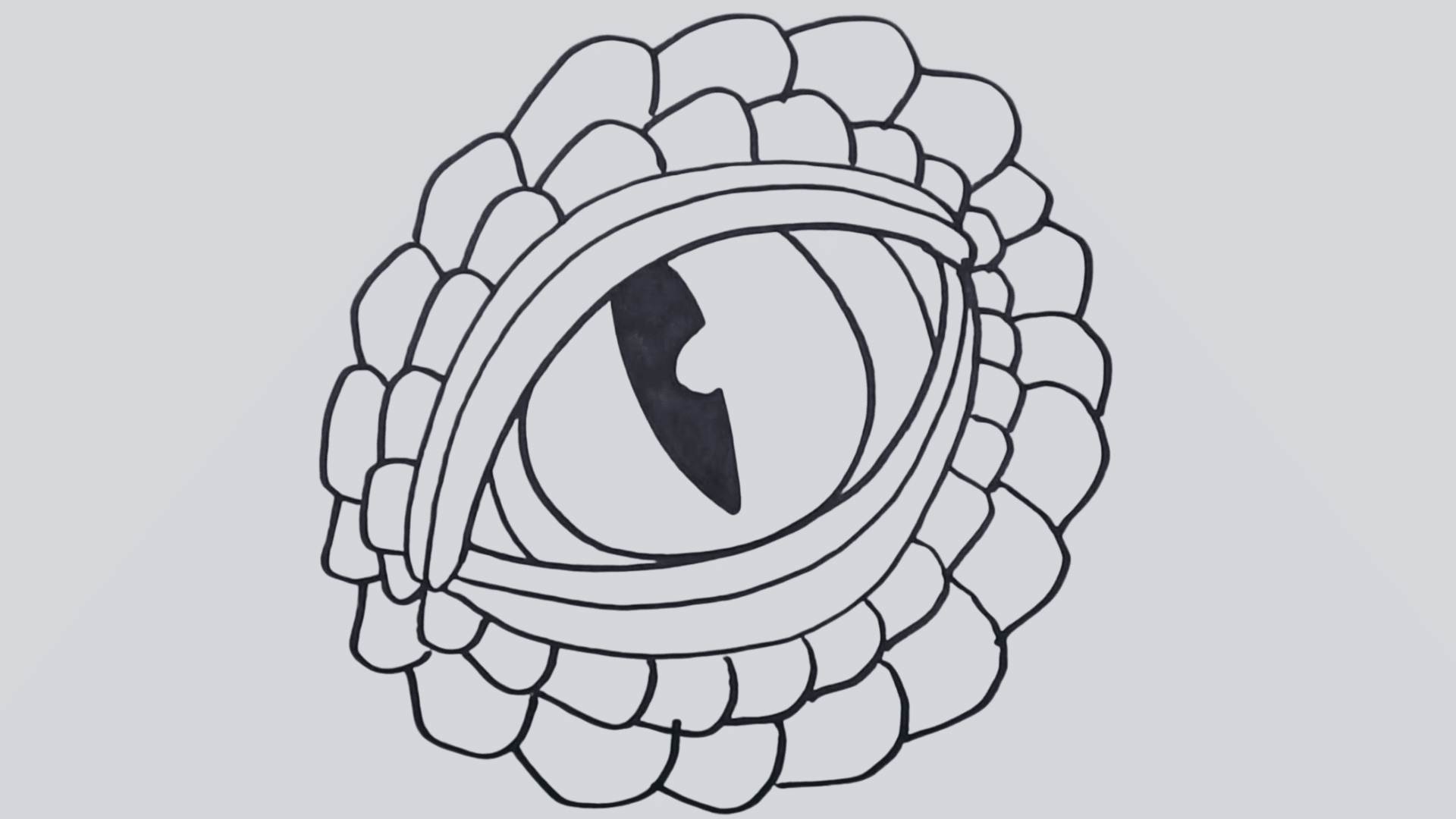
Now it’s time to build the dragon’s scaly texture. Start by drawing small, irregular, curved shapes around the eye.
Place each new scale slightly lower and overlapping the previous one. Vary their size, with some large and some small, to maintain a natural appearance.
Continue outward, allowing the patterns to grow until they extend beyond the page, emphasizing that this is a close-up.
Step 5: Refine with Extra Details
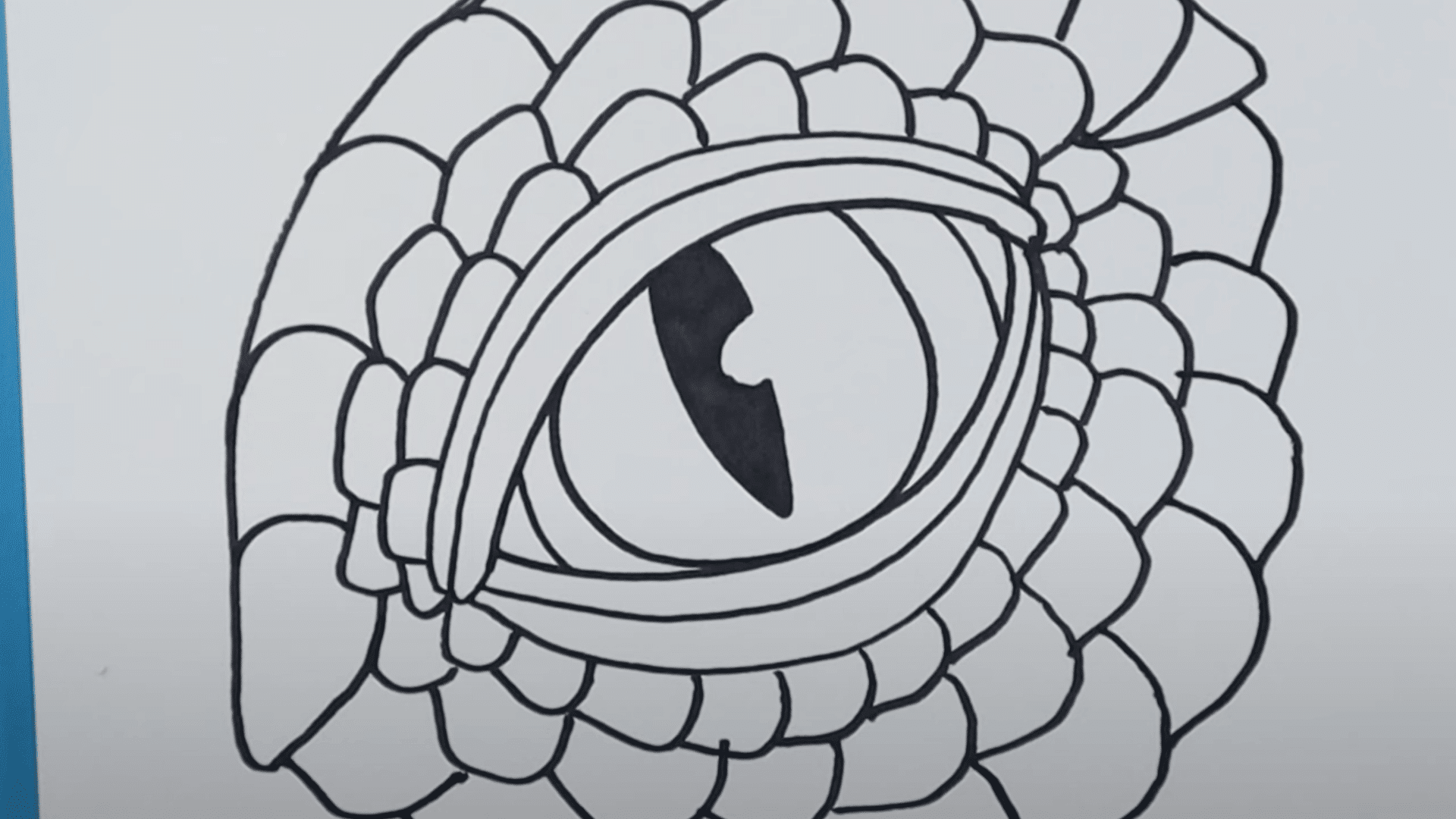
Go back and add smaller lines or extra shapes between scales for variety.
A few light strokes around the eye’s outline will give it more definition.
Think about cracks, creases, or even tiny spikes. These small additions will make your dragon’s skin look tougher and more realistic.
Step 6: Add Color and Depth
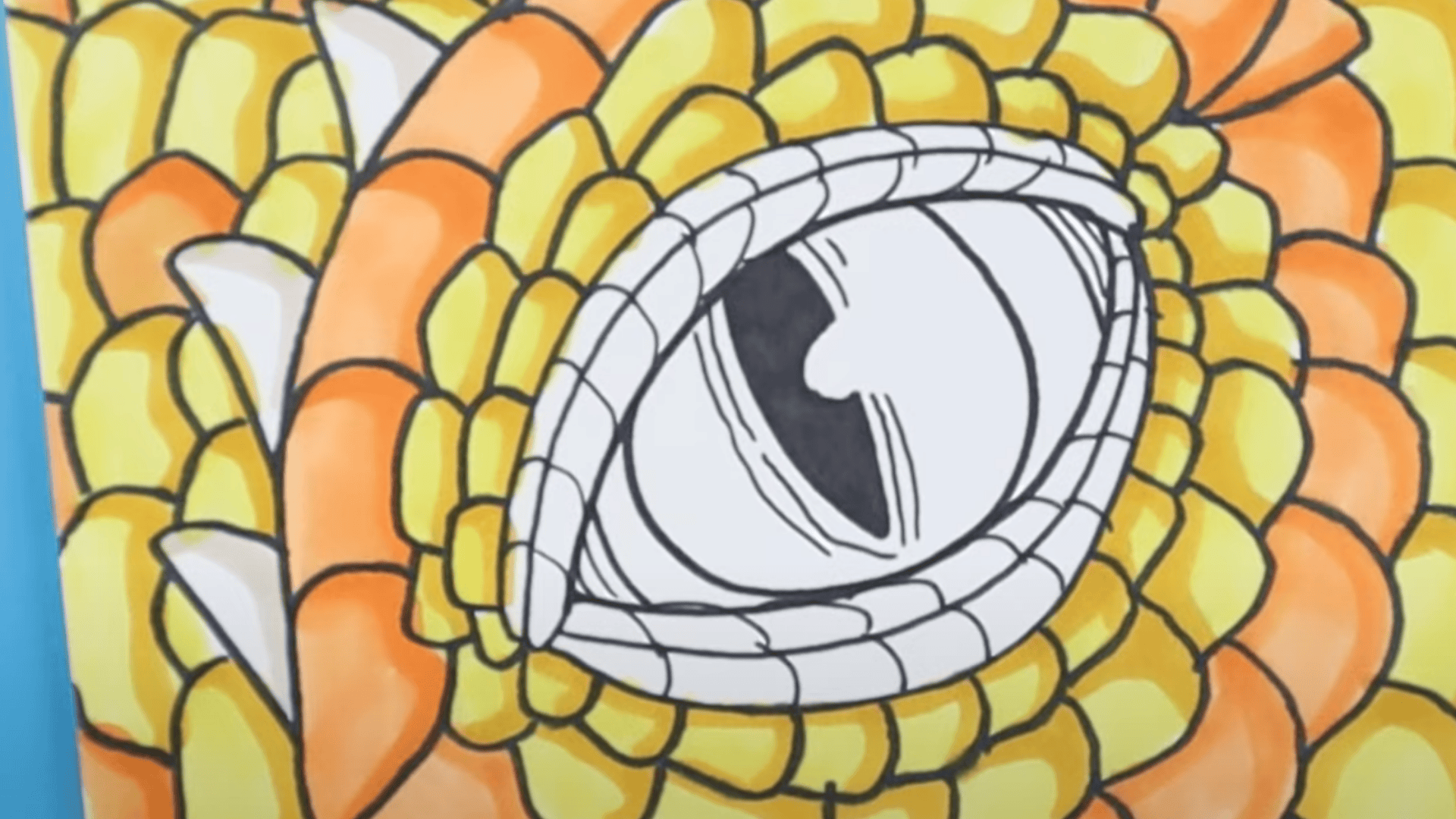
Select a color palette that makes the eye stand out.
For example, yellows and oranges for the scales, with deeper reds near the edges. Start with a base color, then layer darker shades along one side of each scale to create a shadow effect.
For the eyeball, use darker reds, browns, or even glowing greens. You can highlight raised areas with a touch of white pencil to give the illusion of shine.
The more carefully you blend light and dark, the more lifelike and dramatic your dragon eye will look.
For more detailed tutorial refer to the video below:
Tips to Improve Your Dragon Eye Drawing
- Layer your colors gradually: Build depth with multiple thin layers rather than a single, heavy application for realistic luminosity.
- Add inner glow effects: Create magical radiance by blending lighter colors from the center outward, suggesting supernatural energy.
- Include reflective highlights: Place strategic bright spots to simulate the glossy, wet surface of a living eye.
- Vary pupil shapes: Experiment with vertical slits, horizontal bars, or unique geometric patterns to show different dragon species.
- Create texture around the eye: Adding scales, wrinkles, or ridged skin to frame the eye and enhance realism.
- Use contrasting colors: Pair warm and cool tones (like orange flames with blue depths) for visual impact and a magical feel.
Other Dragon Eye Drawing Related Projects to Try
Searching diverse dragon eye projects, carded, mechanical, or mandala, builds skills and creativity, offering more artistic growth than repeating a single drawing.
Damaged Dragon Eyes
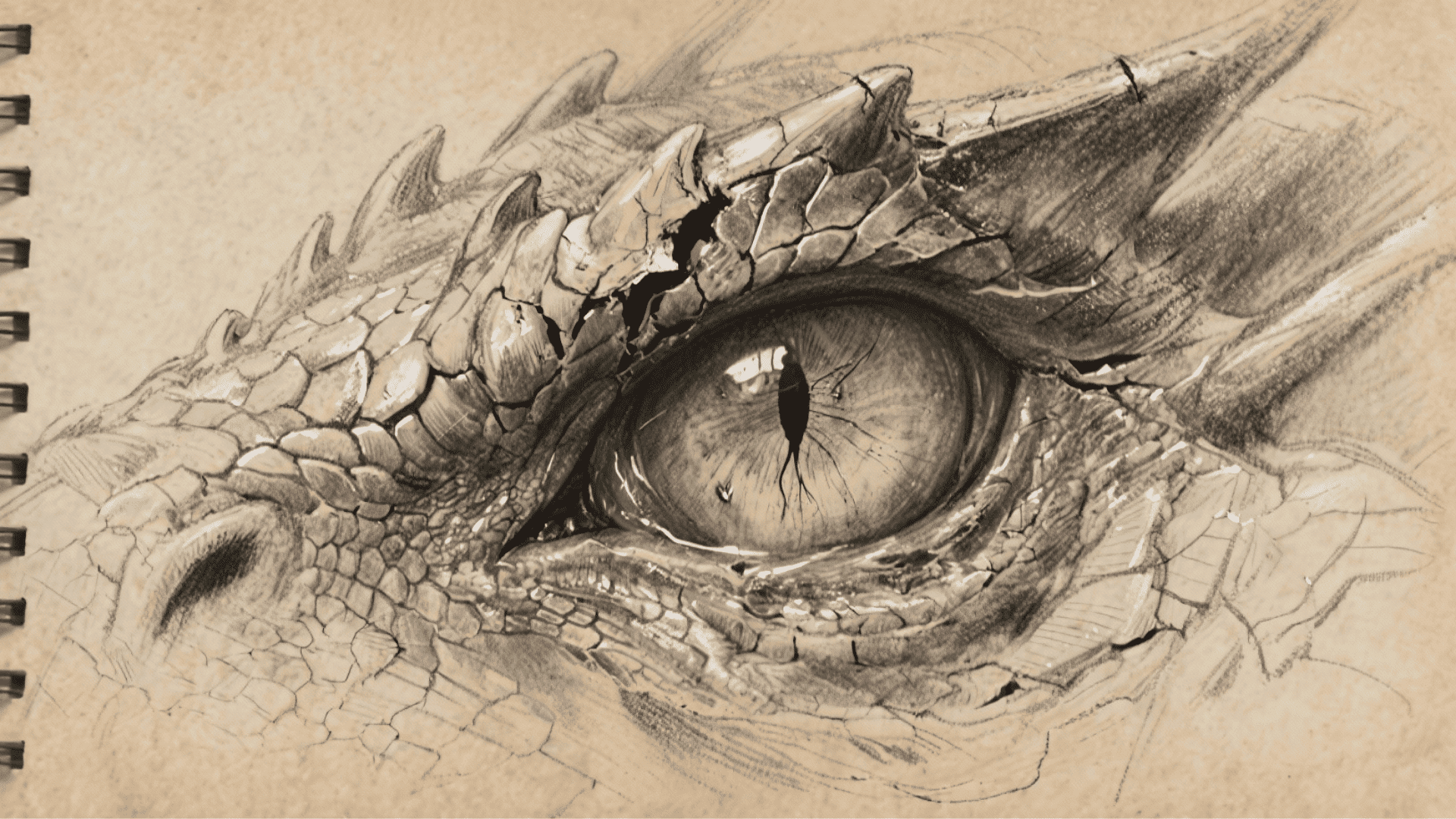
Damaged dragon eyes tell powerful stories of ancient battles, magical conflicts, and survival against impossible odds.
These battle-worn features add depth and character to your dragons, changing them from pristine fantasy creatures into seasoned warriors with rich histories.
Scars, missing scales, and healed wounds around the eyes create compelling visual narratives that draw viewers in.
Mechanical Dragon Eyes
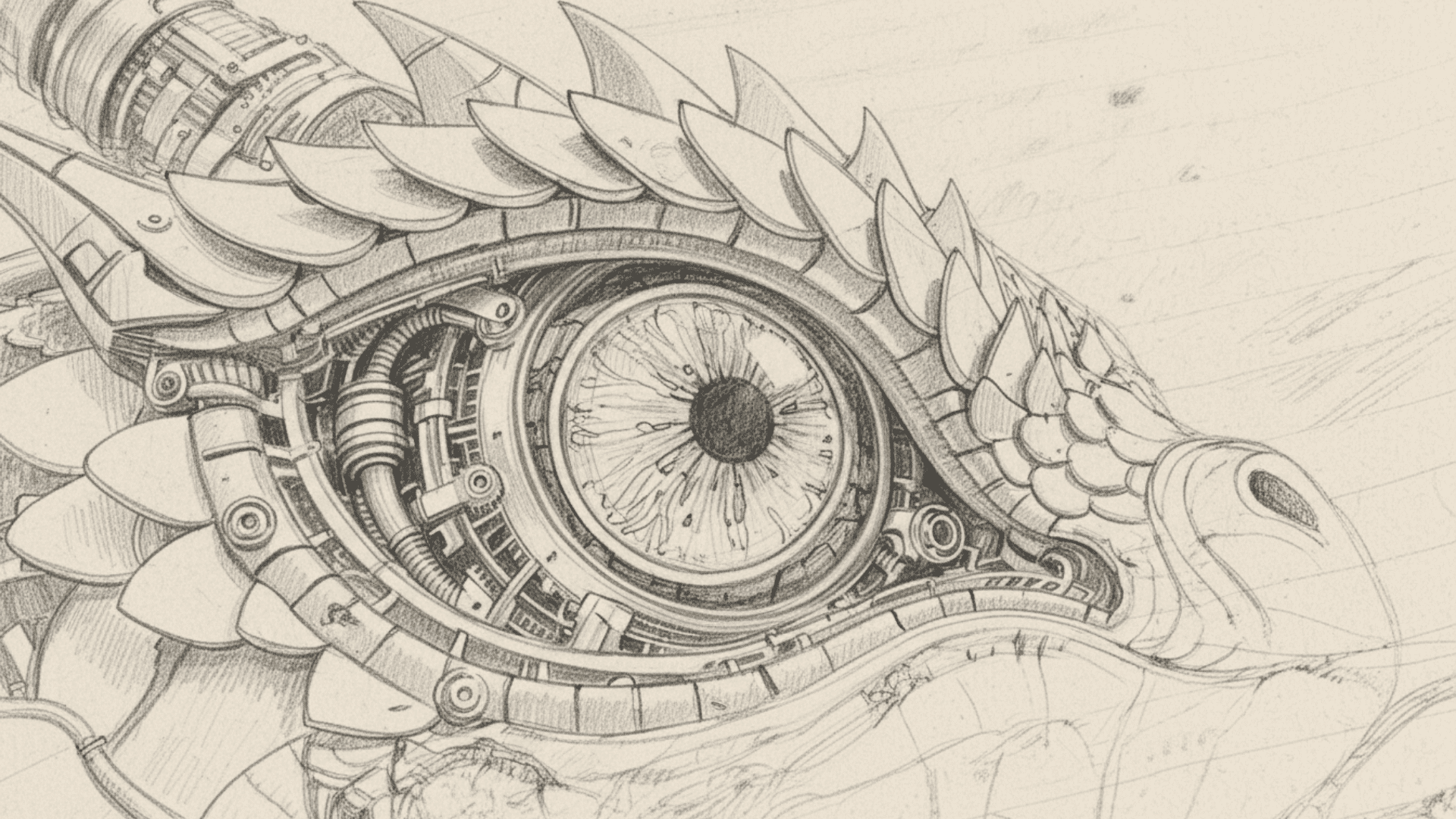
Mechanical dragon eyes blend organic fantasy with industrial precision, requiring a completely different artistic approach than traditional dragon eyes.
Instead of smooth scales and natural textures, you’ll work with hard edges, metallic surfaces, and geometric patterns.
The key difference lies in combining curved organic eye shapes with angular mechanical elements, such as gears, pistons, and glowing circuits, which demand sharp line work and metallic rendering techniques.
Dragon Eye Mandala Art
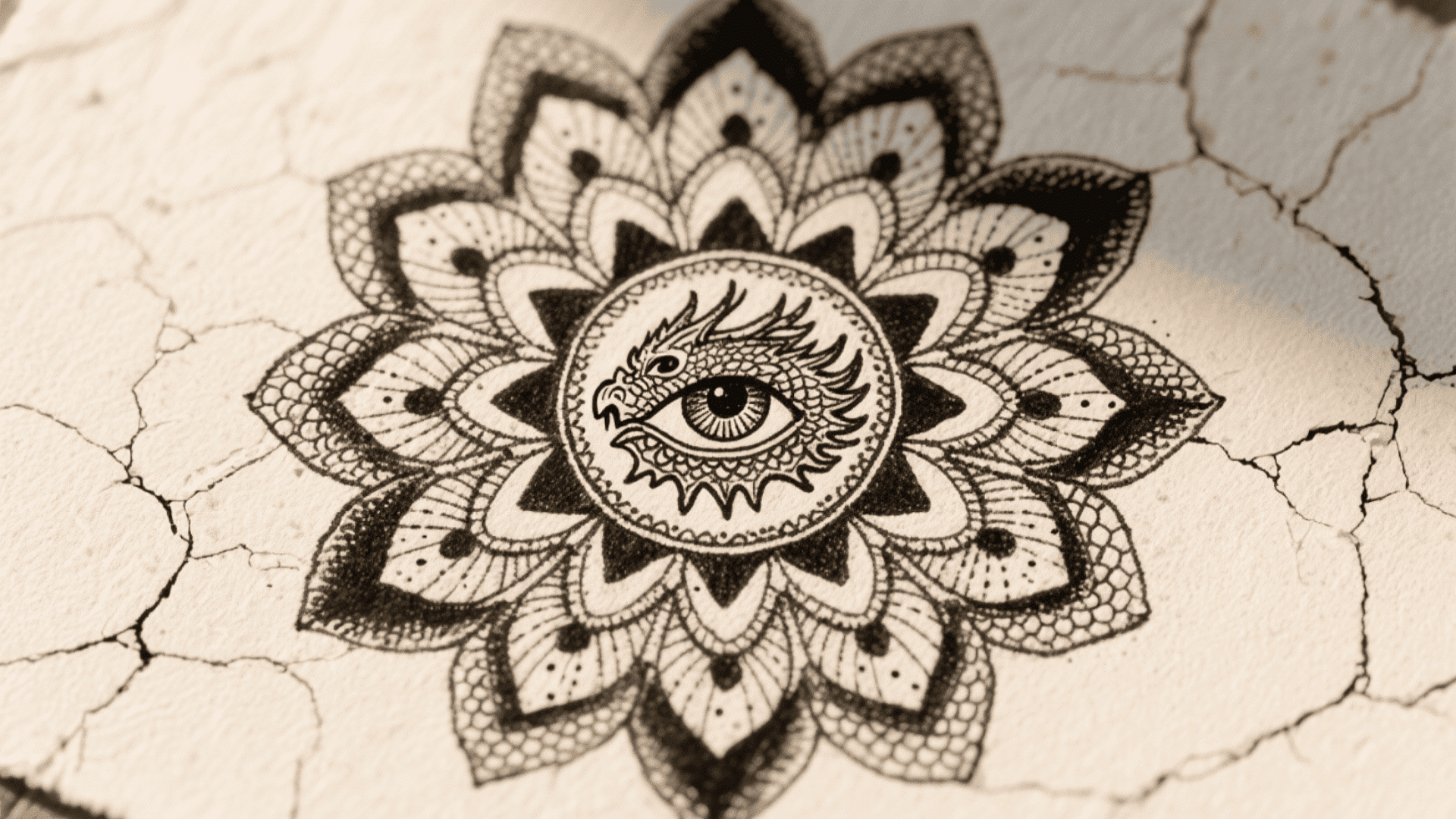
Dragon eye mandalas combine the mystical power of dragon imagery with the sacred geometry of traditional mandala patterns, creating uniquely mesmerizing artwork.
This technique turns the intense focal point of a dragon’s gaze into circular, symmetrical designs that radiate outward in repeating patterns.
What makes them special is how they balance the wild, untamed energy of dragons with the meditative calm of mandala art, resulting in pieces that are both spiritually soothing and dramatically powerful.
Dragon Eye Art Bookmark
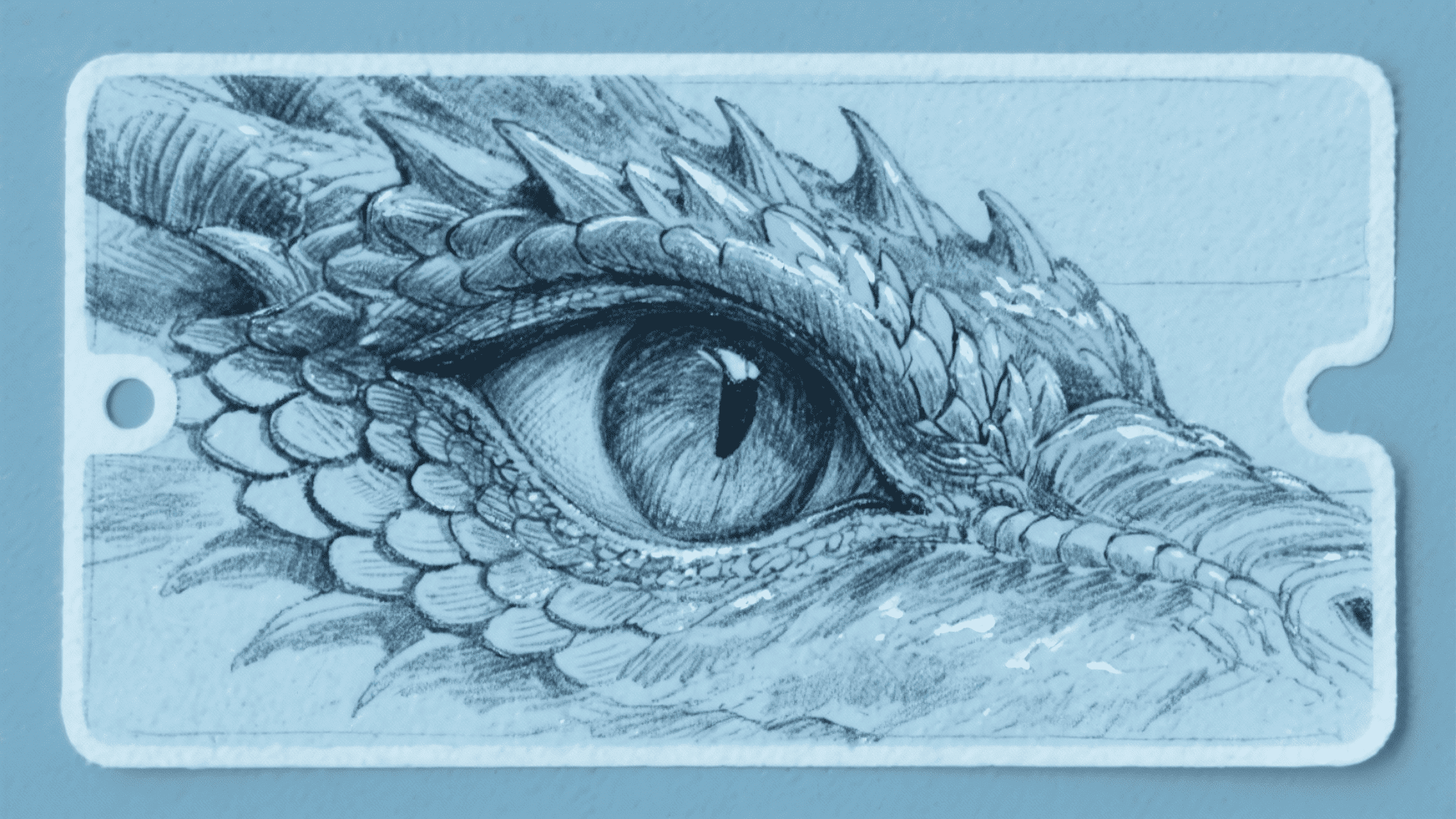
Dragon eye bookmark turns your artistic studies into practical collectibles that bring fantasy magic to everyday reading.
These unique pieces combine the intense visual appeal of dragon eyes with functional design, creating bookmarks that seem to watch over your books with mystical protection.
What makes them special collectibles is their dual nature – they’re both usable art and miniature masterpieces that can be traded, gifted, or displayed, turning each reading session into a magical experience.
Conclusion
Dragon eye drawing is more than mastering a single technique; it’s about capturing the soul of mythical power on paper.
From understanding basic eye anatomy to adding magical glows and battle scars, each skill you develop brings your dragons closer to life.
The path from your first simple eye sketch to complex, emotion-filled dragon gazes reflects your growth as an artist.
Your dragons are waiting to open their eyes, begin drawing, and watch them come alive.

